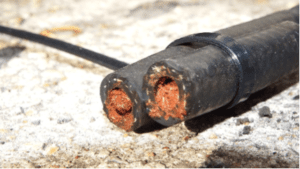KWE tech note: V12 cooling system and heater problems
- 8th March 2016
- News, Technical
- Posted by kwecars
- 2 Comments
A Jaguar V12 cooling system in good condition is capable of dealing with all conditions, contrary to popular belief, and does not need upgrading or fancy coolants and additives. However, it is relatively complex and more difficult to keep in good condition compared to the I6 engines.
A common problem is that the heater will not blow hot even with the engine up to full temperature. As far as the source of heat is concerned, there are two main likely problems:
- The heater matrix is fully or partially blocked
- Coolant is not flowing into the matrix because the engine is not self-bleeding correctly, leading to an airlock
Any kind of coolant leak-sealer is a major problem, because it seals up the heater matrix where there is often trapped air. Sealants work by solidifying when they encounter air, usually at a leak. We have examined this problem previously.
Keep your V12 cooling system in tip top condition
On occasion, the heater can become clogged with rust as a result of the system not having had fresh antifreeze or corrosion inhibitor frequently enough. Although the engine has alloy heads and block, there are steel components in the coolant waterways, which rust with alacrity unless corrosion inhibitor is present and fresh.
Rust flakes travel around the system and the narrowest parts are in the heater matrix, which clogs first. This is fairly easy to fix by disconnecting the hose from the right hand water manifold to the heater valve, then disconnecting the hose from the heater matrix to the pipe leading to the radiator bottom hose union, and then attaching a garden hose to this second hose and flushing it out.
This is reverse flushing – the coolant normally travels from right to left – and should blow out any cloggage. It’s a good idea to then flush it the other way and repeat the cycle several times.
The other problem is the engine not self-bleeding. The coolant filler is not at the highest part of the engine (the heater is), and so when filling or topping up the engine, there is no guarantee that coolant will get into the matrix.
The system has a self-bleeding function, which involves a large number of small-bore pipes and hoses intend to shunt any air in the system into the radiator where it won’t do much harm. Air pockets in the engine – especially the cylinder heads – can create localized hot spots and boiling, eventually warping the heads.
This self-bleeding process is reasonably effective, and there is a special technique needed to fill a V12 (download here), but it depends on all the bleed pipes and hoses being clear – unlike this one:
This condition will stop the heater matrix from receiving water and will quite possibly lead to engine overheating, which in turn can cost over £10,000 to resolve. If this system had correct coolant changes throughout its life, this clogging would not have occurred.
There is also a steel pipe like this:
Mounted on top of the radiator panel, it is crucial in the bleeding system. It is very commonly clogged with rust, especially the ‘banjo’ union indicated by a finger.
These are simple faults to fix, but cause a great deal of costly problems if not attended to.
Speak to the experts
At KWE we are very aware of these issues and deal with them properly. To arrange a consultation, please email [email protected] or call 01635 30030.
Alternatively, follow us on Twitter or like our Facebook page.


2 Comments
Hoi Chris,
If you would be so kind to send me the PDF,after reading i want to flush my system immediately
regards Guus
Hi Guus, here is a link to the bleeding procedure: https://www.kwecars.com/wp-content/uploads/2016/03/KQC15-V12-CoolantFillBleed.pdf